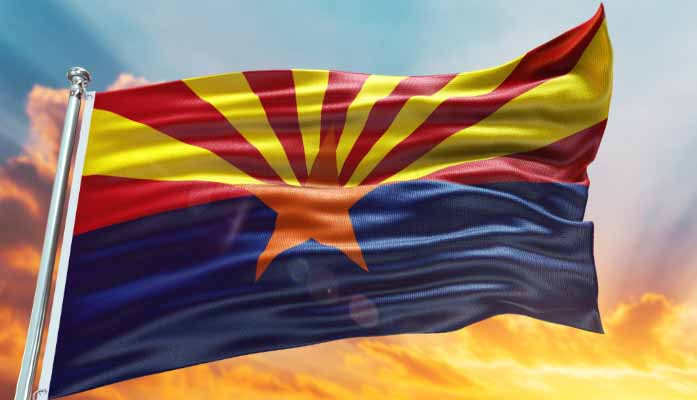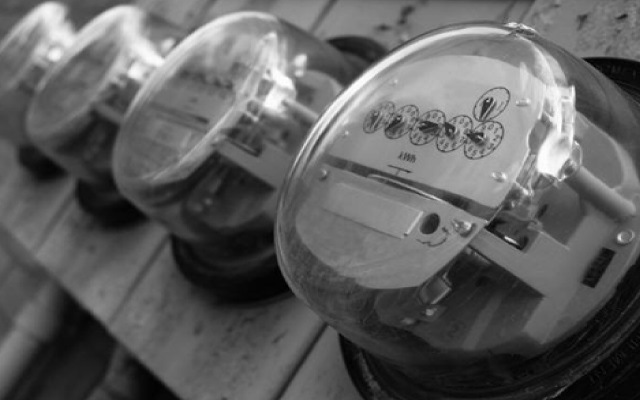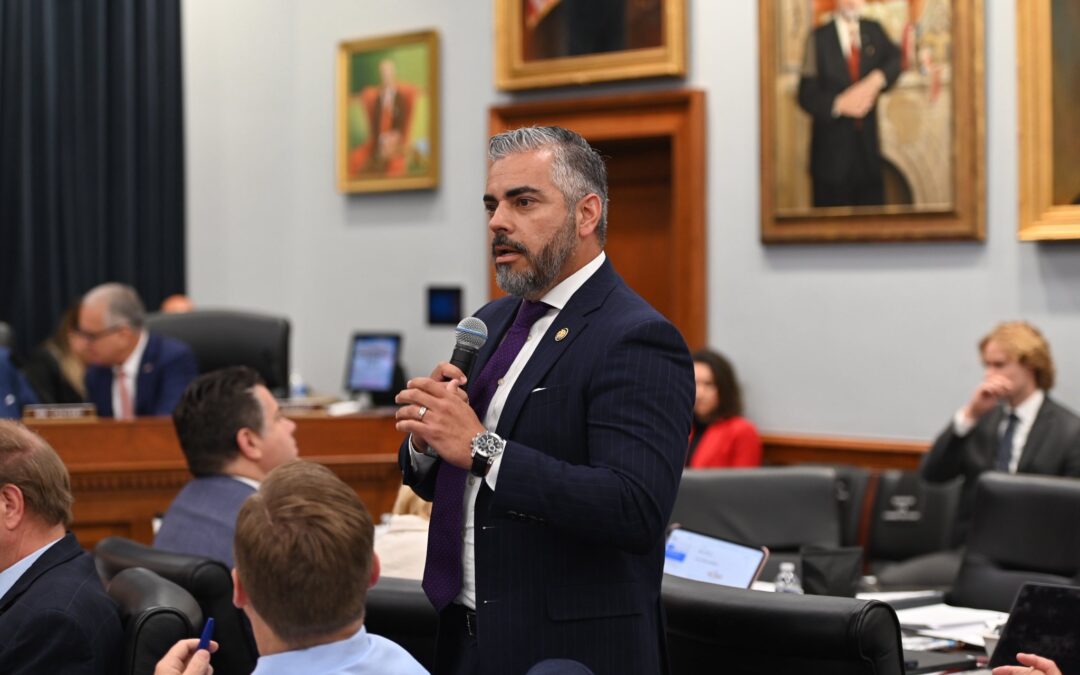
by Jonathan Eberle | Sep 22, 2025 | Economy, News
By Jonathan Eberle |
Arizona workers in Yuma and Lake Havasu City-Kingman have seen some of the strongest wage growth in the nation over the past five years, according to a new analysis of Bureau of Labor Statistics data.
The study, conducted by AlgoCademy, reviewed mean hourly wage changes across 395 U.S. metropolitan statistical areas between 2019 and 2024. It found that two Arizona metros ranked in the national top 50 for wage growth.
Yuma placed 11th nationwide, with mean hourly wages climbing from $19.54 in 2019 to $25.74 in 2024—a 31.73% increase. Lake Havasu City-Kingman followed at 26th, where average wages rose from $19.90 to $25.89, a 30.10% increase.
Nationwide, the strongest growth occurred in San Jose-Sunnyvale-Santa Clara, California, where wages jumped 44.29% to an average of $58.25 per hour, reflecting the tech hub’s continued economic strength. Other metros in the top five included Sebring, Florida (up 38.74%), Decatur, Illinois (37.89%), Boulder, Colorado (37.84%), and Bellingham, Washington (37.10%).
AlgoCademy’s founder and CEO, Mircea Dima, noted that the findings highlight a broad trend: wage growth is not confined to large urban centers. “Smaller and mid-sized areas like Grants Pass, Oregon, Modesto, California, and Logan, Utah are all seeing wage increases above 34%, showing that opportunities for higher earnings are spreading beyond major U.S. cities,” Dima said. “These trends are a clear sign that workers across the country are benefitting, which can have a positive effect on local communities, from boosting spending power to attracting new talent and investment.”
The research underscores that wage gains have been widespread. While high-growth areas like Silicon Valley continue to dominate in raw numbers, smaller regions—including several in Arizona—are seeing wages rise at a pace that outstrips many larger metropolitan areas. Arizona’s results put the state in strong company, showing that even outside its largest metros, wages have grown substantially since 2019.
Jonathan Eberle is a reporter for AZ Free News. You can send him news tips using this link.

by Matthew Holloway | Sep 21, 2025 | News
By Matthew Holloway |
In a key vote on Wednesday, the Arizona Corporation Commission, led by Commissioner Rachel Walden, unanimously repealed the state’s Energy Efficiency (EE) and Demand Side Management (DSM) Rules. The regulations, now 15 years old, have been expired since 2020, and according to the board, have cost Arizona ratepayers more than $1 billion in additional surcharges since inception.
Both APS and TEP have exceeded the requirements, the board noted, with Commissioner Márquez Peterson explaining, “The current standard required the accumulated savings of 22% of retail sales by 2020. We’ve had(sic) reconfirmed that as of 2024, APS is at 26.2% and TEP is currently at 28.52%. Both utilities have exceeded the standard which is out of date.”
“I cast my vote to repeal the rules because the rules were not based on any cost-effectiveness tests, nor did they contain any other ratepayer protection requirements. The mandates instead passed all program costs in support of the few on the backs of all ratepayers, especially onto those who can least afford it—our low- and fixed-income ratepayers, and our hardworking Arizona families,” Commissioner Walden said in a statement Thursday.
“I fully support the use of EE mechanisms and DSM programs, which have demonstrated energy savings, especially during peak summer heating days when our energy needs have stressed the electrical grid. What I do not support is the cost shifts and economic burdens these mandated programs have created, costing ratepayers in excess of $1.1 billion.”
Commissioner René Lopez noted during the meeting that the rules “were written over a decade ago.” He added, “We’ve had a lot of changes in technology, and a lot of changes in demand are coming, It served its purpose, everyone has met the requirements, now it’s time for them to go away.”
The commission explained that the repeal of the rules does not eliminate the EE/DSM program; instead, Arizona utilities will now be required to use All-Source Requests for Proposals when they create plans to address forecasted energy demands, with EE and DSM programs continuing as two categories of solutions that can be proposed for the utility’s consideration.
“I urge technology stakeholders to continue to propose these types of solutions to offset utility generation needs,” Walden added. “The solutions must be cost-effective, and the Commission will continue to evaluate these programs on a case-by-case basis during rate cases. I recently offered an amendment to approve a Bring Your Own Device DSM program for APS customers that did not create a cost shift, and that amendment was adopted by majority vote by this Commission.”
Commissioner Márquez Peterson added in a statement, “As a Commissioner, I will continue to communicate to utilities my support for effective EE programs in future rate cases. These programs can save ratepayers on their electricity bills and help us ensure we have reliable energy during peak times of the day.”
Matthew Holloway is a senior reporter for AZ Free News. Follow him on X for his latest stories, or email tips to Matthew@azfreenews.com.

by Matthew Holloway | Sep 21, 2025 | News
By Matthew Holloway |
On Tuesday, the Cochise County Supervisors voted to ask U.S. Attorney General Pam Bondi to investigate the certifications and laboratory accreditation of the county’s voting systems ahead of the 2022 election.
In a letter from Cochise County Board Chairman Frank Antenori, the board requested that “information from the United States Department of Justice concerning the accreditation of the voting system test laboratories (VSTLs), the certification of ES&S electronic voting systems, and the use of engineering change orders during the 2022 Arizona general election.” He added that “these matters present material statutory and constitutional questions that relate directly to the integrity of the electoral process in Arizona.”
Antenori also observed that the Board has “a constitutional and statutory obligation to ensure compliance with election law,” citing Article 7, Section 7 of the Arizona Constitution that governs the tabulation of “legal votes.”
He explained that the United States Election Assistance Commission (EAC) “has invoked 52 USC § 20971(c)(2) to argue that accreditation remains valid indefinitely absent formal revocation. Respectfully, the plain text of the statute requires renewal on a biennial basis.”
The Chairman went on to point out that the accreditation had lapsed in March 2020 and stated, “The EAC’s interpretation appears inconsistent with both the statutory language and congressional intent.”
In particular, Antenori observed that A.R.S. 16-442 (B) requires the following: “Machines or devices used at any election for federal, state or county offices may only be certified for use in this state and may only be used in this state if they comply with the Help America Vote Act of 2002 and if those machines or devices have been tested and approved by a laboratory that is accredited pursuant to the Help America Vote Act of 2002.”
The accreditation question led two Republican supervisors to delay the county’s election certification in 2022 until they were ordered to do so by a judge. A state grand jury later indicted the two supervisors on charges brought by Arizona’s Democrat Attorney General Kris Mayes. Supervisors Tom Crosby and Peggy Judd, both Republicans, faced charges of conspiracy and interference with an elections officer. Judd pleaded guilty while Crosby awaits trial.
As reported by VoteBeat’s Jen Fifield, the letter to AG Bondi was proposed by Crosby after he was reelected last year. The executive session in which the letter was discussed was closed to the public; however, Fifield reported that Crosby attached a 30-page document to the meeting minutes, providing the board with additional details and even a piece of grand jury testimony from his case.
On Monday, Fifield reported that a judge rejected Crosby’s request to delay his case, and his trial date will still be set on Sept. 22.
Matthew Holloway is a senior reporter for AZ Free News. Follow him on X for his latest stories, or email tips to Matthew@azfreenews.com.

by Ethan Faverino | Sep 21, 2025 | News
By Ethan Faverino |
Congressman Juan Ciscomani (AZ-06) marked a personal milestone on September 18, 2025, commemorating 19 years since he became a U.S. citizen and reflecting on his remarkable journey from a congressional intern to a member of the United States Congress.
In a heartfelt post on X, Ciscomani shared a touching moment of his parents visiting him on Capitol Hill, 18 years apart, highlighting the opportunities afforded by the American Dream.
“Same place and same people, 18 years apart,” Ciscomani wrote. “In 2006, my parents visited me on Capitol Hill. I was a Congressional intern with a Green Card. Now they’re back visiting me again. And I’m a member of Congress with a Green Pin. Grateful for the opportunities our great nation offers!”
Ciscomani, who represents the Arizona 6th Congressional District, also celebrated the 19th anniversary of his U.S citizenship, recalling the moment he raised his right hand and became a citizen.
“From the son of a bus driver to serving in the United States Congress—my story and millions of other stories are only possible in the greatest country on earth. Grateful for the blessings of citizenship and the American Dream!” said Ciscomani on X.
Before his election to Congress in 2022, Ciscomani served as the senior advisor to Arizona Governor Doug Ducey and held leadership roles in the Tucson Hispanic Chamber of Commerce, where he advocated for economic growth and community development.
As a member of Congress, Ciscomani has focused on issues critical to his constituents, including border security, economic development, and veterans affairs. He serves on the House Committee on Veterans Affairs and House Committee on Appropriations, where he advocates for policies to strengthen Arizona’s communities and support the nation’s veterans.
Ethan Faverino is a reporter for AZ Free News. You can send him news tips using this link.

by Matthew Holloway | Sep 20, 2025 | News
By Matthew Holloway |
Arizona AG Kris Mayes’ Communications Director Richie Taylor deleted his X, Bluesky, and LinkedIn accounts after screenshots of his alleged posts surfaced on “groypers” and “violence on the right.”
Corey A. DeAngelis, a Senior Advisor with Americans For Fair Treatment, shared a screenshot allegedly taken from Taylor’s X account, which read, “Lots of people learning about groyper’s tonight because of violence on the right in this country.”
The post appeared to advance the unsubstantiated theory that Charlie Kirk’s assassin, Tyler Robinson, is a member of online commentator Nick Fuentes’ fan base, known as “groypers,” who have rhetorically feuded with Kirk and Turning Point USA over the years.
As reported by the Associated Press, Utah County Attorney Jeff Gray revealed Tuesday that evidence, including a text confession and a note, shows the suspect targeted Charlie Kirk, stating, “I had enough of his hatred. Some hate can’t be negotiated out,” and “I had the opportunity to take out Charlie Kirk and I’m going to take it.”
The comments would seem to preclude the assassin from views that could be “on the right,” as Taylor’s alleged post suggested. Gray declined to address whether Kirk was targeted due to his views on transgenderism on Tuesday, telling reporters, “That is for a jury to decide.”
Last month, Taylor came under public scrutiny for “vicious ad hominem attacks” against Jenny Clark, founder of Love Your School, a nonprofit that advocates for parental rights, school choice, and resources for Empowerment Scholarship Accounts (ESA) and special education students.
Following the incident, Clark posted an update saying, “Update: the Head of Communications for @AZAGMayes, @richietaylor – has deleted posts against me which were extremely aggressive, untrue, unprovoked and vicious ad hominem attacks. I make policy arguments supported by available facts, they prefer to personally attack people.”
Matthew Holloway is a senior reporter for AZ Free News. Follow him on X for his latest stories, or email tips to Matthew@azfreenews.com.

by Staff Reporter | Sep 20, 2025 | Education, News
By Staff Reporter |
Community members are questioning delays in Deer Valley Unified School District (DVUSD) releases of public records.
Tiffany Hawkins, a former board candidate and parent in the district, reported DVUSD “buried” about 3,000 emails in a public records request. Hawkins accused DVUSD officials of doing so to hide staff usage of school resources and time for electioneering.
DVUSD officials have previously faced accusations by parents of electioneering on school grounds. DVUSD Superintendent Curtis Finch was accused of doing so by placing political flyers on cars at school football games.
DVUSD is currently up for a budget override on the ballot this November. The 15 percent maintenance and operations (M&O) will cover approximately nine percent of all salaries, maintain maximum class sizes, pay for support services staff like counselors and nurses, and continue certain student programs such as free full-day kindergarten. This election is mail-in only.
Reporting from the Arizona Auditor General found that DVUSD spends more money on administrative costs in comparison to peer districts, ranking it as “high,” and noted that transportation spending per mile and per rider was “very high.” The report also noted that enrollments have declined steadily.
The auditor general also noted that the average teacher salary was over $2,000 less than the state average — even with the average teachers having over 12 years of experience. The district did apply its additional state monies intended to increase teacher salaries by 20 percent from the 2017 base fiscal year, which raised salaries by 35 percent.
Finch has blamed the state’s school choice program for their financial woes, manifesting as teachers struggling to come up with the funds for basic school supplies.
“Arizona has the most unusual (education) system in the nation. We have zero accountability,” said Finch in an interview with 12 News last week.
Hawkins also alleged that DVUSD denied 41 percent of her public records requests, along with withholding about 37,000 pages.
Arizona Women of Action (AZWOA), an affiliate of Hawkins, reported additional issues with public records requests being fulfilled in an untimely and incomplete manner.
AZWOA reported missing over 142,000 pages, collectively across multiple requests, and delays in responses taking anywhere from 100 to over 300 days.
DVUSD governing board member Kimberly Fisher said she has experienced “many games played” concerning public records retrieval. Fisher alleged “most” others wouldn’t speak up for “fear” of Superintendent Curtis Finch and his wife.
“Some excess redaction, some missing that suddenly show up, some taking over a year to receive, some they made me come in and scan myself if I wanted to see them only to find they already had them electronically,” said Fisher.
Hawkins said she filed a complaint alleging “discrimination and retaliation.” The board dismissed the complaint.
Earlier this year, parents expressed concerns with DVUSD compliance with President Donald Trump’s orders to end Diversity, Equity, and Inclusion (DEI) teachings and programs.
AZ Free News is your #1 source for Arizona news and politics. You can send us news tips using this link.






